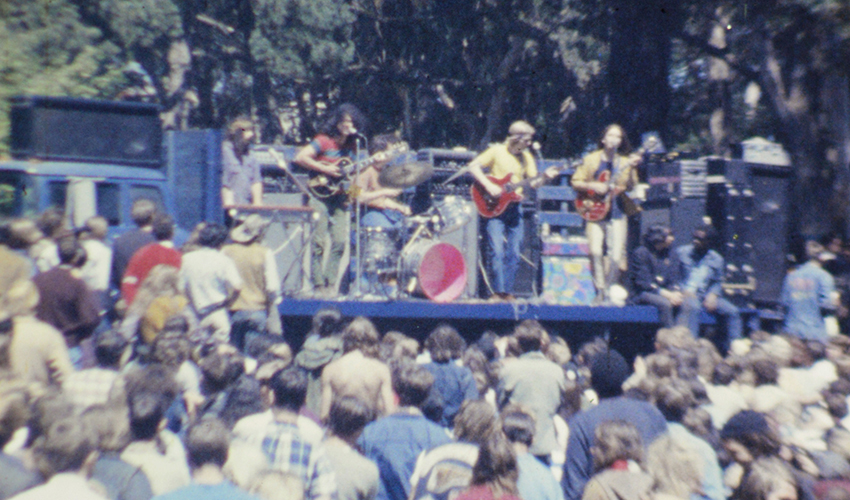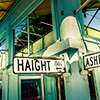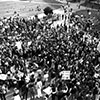‘Summer of Love’ leaves an indelible imprint on today’s rock music

Rock band The Grateful Dead plays “Viola Lee Blues” in Golden Gate Park Aug. 28, 1967, at the wake of Hells Angel Chocolate George, who was killed earlier that month in a motorcycle accident on Haight Street. Credit: KRON News footage
For the first time, young adults declared rock and roll their music and it became almost as essential as food and water
Part 3 of six stories about the lasting legacy of the Summer of Love
By the time 1967’s Summer of Love arrived it became clear that rock and roll was here to stay and fans were taking the musical genre as seriously as they did politics.
The lead-up to the Summer of Love and the period afterward completely transformed people’s attitudes toward rock and its sound, according to a music expert at San Francisco State University. Today, its legacy lives on in the continual experimentation with sound.
Up until the “British Invasion” in 1964, rock music was for kids, according to Dean Suzuki, associate professor in the School of Music. Once people entered young adulthood, they no longer listened to rock. In the early '60s, people might listen to folk music or ever more mature artists such as Frank Sinatra and Sammy Davis Jr. When Baby Boomers came of age during the 1960s, it was presumed they would grow out of their rock phase, but that never happened, he added.
At the same time, music began to mature. For example, early Beatles songs like, “I Want to Hold Your Hand” featured innocent lyrics. But by 1965, when the “Rubber Soul” album was released, songs began to appear with more adult lyrics. When the Beatles sang, “We talked until 2 and then she said it’s time for bed” in “Norwegian Wood,” they weren’t just referring to going to sleep, Suzuki said.
Bands also began creating smart albums, he said. “In the 1950s you’d buy an album by Elvis and there’d be one or two hits, and the rest of the songs were forgettable throwaways.” The music market was driven by singles,” he said. “The Beatles were the first group where you’d listen to every song on the album — all killer, no filler.” Other bands followed suit, and by the late 1960s there was an efflorescence of new rock subgenres like country rock, folk rock, acid rock, progressive rock and blues rock.
During this period, musicians were also experimenting more with distorting the sound of their instruments, mainly the electric guitar. “In the late 1960s there were essentially two things, a wah-wah pedal and a fuzzbox,” Suzuki said. “The wah-wah pedal was so distinctive, listeners began to imagine: ‘If we can do that, what else can we do?’” That sent musicians on a quest to find out what kind of sounds they could get out of their electric guitars, a pursuit that continues today. And now at concerts, musicians have a hodgepodge of pedals on the stage, all working to give their music a specific sound.


